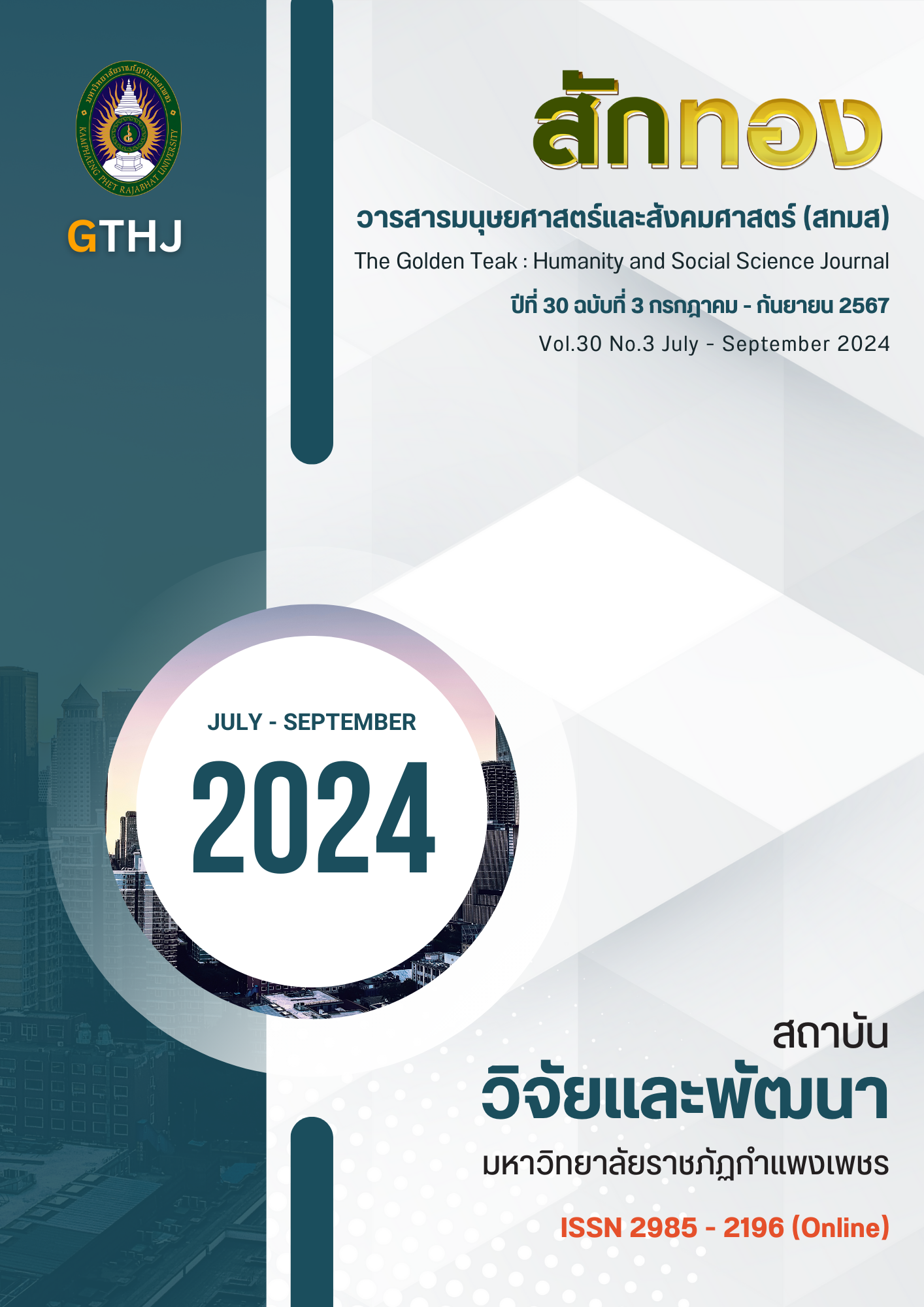The Presentation of Vernacular Architecture via Augmented Reality Technology : A Case Study of Ban Pha Po, Kamphaeng phet province
Main Article Content
Abstract
This article aims to analyze the effectiveness and travelers’ satisfaction towards the presentation of agriculture via augmented reality (AR) technology: a case study of Ban Pha Po building, Kamphaengphet province. Ban Pha Po building, located near Khlong Suan Mak canal, was once for wood trade in the reign of King Rama V. At that time, the canal was used as wood-controlled skidding and transport trail from forest to Nakhon Sawan province which was the largest wood trade junction in the lower northern region of Thailand. Ban Pha Po building, though being over 100 years old and now derelict, still holds its historical value. The research method consists of 3 steps including 1) collecting data and interviewing people about the Ban Pha Po history, doing cadastral survey at the site to create 2D and 3D models, 2) developing the application to present Ban Pha Po 3D model by using AR technology, and 3) doing assessment of effectiveness and satisfaction of the application via questionnaire with 100 travelers. The results showed that for application effectiveness, the interestedness of Ban Pha Po 3D building model with 360-degree rotation had the highest effectiveness at an average score of 4.34, followed by the interestedness of the AR technology at an average score of 4.26, and the link appeared in the application at 4.16. For satisfaction towards application, the appropriateness of content list and length earned the highest satisfaction at the average score of 4.28 while the straightforward content and use of clear graphic and symbol followed behind at the average scores of 4.24 and 4.22, respectively.
Article Details

This work is licensed under a Creative Commons Attribution-NonCommercial-NoDerivatives 4.0 International License.
บทความที่ได้รับการตีพิมพ์เป็นลิขสิทธิ์ของวารสาร สักทอง : วารสารมนุษยศาสตร์และสังคมศาสตร์ สถาบันวิจัยและพัฒนา มหาวิทยาลับราชภัฏกำแพงเพชร
ข้อคิดเห็นใดๆ ที่ปรากฎในวารสารเป็นวรรณกรรมของผู้เขียนโดยเฉพาะ ซึ่งมหาวิทยาลัยราชภัฏกำแพงเพชรและบรรณาธิการไม่จำเป็นต้องเห็นด้วย
References
Aphairat, S. (2002). Analyzing, researching, transmitting inscriptions found in Kamphaeng Phet. Kamphaeng Phet : Cultural Council of Kamphaeng Phet Province. [In Thai]
Aphairat, S. (2001). Following in the footsteps of the Lord Buddha at Kamphaeng Phet. Kamphaeng Phet : Cultural Council of Kamphaeng Phet Province and Kamphaeng Phet Provincial Administrative Organization. [In Thai]
Lertbumroongchai, K. (2021). User Interface Design. [Online]. Available : https://touchpoint.in.th [2021, April 5]. [In Thai]
Ngamchindavongse, K., Busayarat, C. & Arpornwicharnop, K. (2019). Archaeological information presentation design with technology that combines the real world with the virtual world : a case study of Prasat Kla Lon Archaeological Site, Sa Kaeo Province. Journal of Architectural/Planning Research and Studies, 16(2), 13-29. [In Thai]
Paireepairit, I. (2013). Augmented Reality. [Online]. Available : http://www.isriya.com/node/3109/augmented-reality [2020, December 21]. [In Thai]
Saengruchi, K. (1993). Legend of Phra Borommathat Nakhon Chum. Muang Boran Journal, 19(2), 55-67. [In Thai]
Srisuwong, T. (2023). AR Technology to promote smart tourism safely Digital Economy Promotion Agency. [Online]. Available : https://www.depa.or.th/th/article-view/ar-technology [2023, January 10]. [In Thai]


